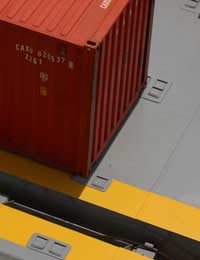Exporting to Europe: An Introduction

Businesses that want to move into exporting for the first time have a wide-range of help, support and advice available to them. One of the best sources of export information is contained in the Passport to Export scheme that is operated by UK Trade & Investment. You can read more about this scheme on their website: [www.uktradeinvest.gov.uk].
One of the most complex areas that all business will have to deal with is customs. Luckily, HMRC (HM Revenue & Customs) have developed a complete guide to importing and exporting [http://tinyurl.com] that you can download from their website. It contains detailed information about all aspects of exporting and should be read by all businesses before they begin their export activities.
Some businesses that want to export certain technology and/or controlled goods may require an export licence. It’s important that you take advice and obtain any licences you may need before you begin to export. All the information you need is on the Department for Business Enterprise & Regulatory Reform (BERR) (formerly the DTI): [www.berr.gov.uk].
There is also a beginners guide to export controls also on the BERR website: [http://tinyurl.com]The HMRC also have a specific guide for exporting that you can read on their website: [http://tinyurl.com].
Completing The Paperwork
All of your exports must be accompanied by an invoice and packing note to make their transit across Europe faster and more efficient. You don’t strictly need any paperwork if you are exporting to any other EU country, but having this basic paperwork with your consignment is good practice.As well as a clear and comprehensive contract with your buyers, there are also some key pieces of paperwork and administrative procedures that all exporters must complete. These include:
- SAD (Single Administrative Document)
This is the standard document that is used in the EU. The form is sometimes referred to as C88. This form can be submitted manually, but its more common to use the CHIEF (Customs Handling of Imports and Exports Freight) electronic system. The SAD form must contain your goods’ Commodity Code and the Customs Procedure Code. - TURN (Traders Unique Reference Number) number
All businesses that export must have a TURN number. This is your VAT number plus a three-digit suffix. More information is on the HMRC website. - Goods classification
Every item that you export must be classified in accordance with the Tariff. This defines each item for customs purposes. You can read more about the Tariff on the Business Link website [www.businesslink.gov.uk]. The Tariff can be difficult to understand for beginners. Help and advice can be obtained from the Tariff Classification Service helpline: 01702 366077. - Intrastat
So that the UK government can accurately compile trade statistics each year, all exporters who move more than £260,000 of goods outside of the UK must complete an intrastat form. Read about intrastat on the Uktradeinfo website:[www.uktradeinfo.com - SSN (Standard Shipping Note)
This is usually completed by all exporters or their agents and accompanies your export shipment. You can read more about the SSN on the SITPRO website: [www.sitpro.org.uk]. Note that if you are exporting goods defined as hazardous, you will also require a DGN (Dangerous Goods Note). - Freight Forwarder
If you’re using a freight forwarder, they must complete an Export Cargo Shipping Instruction (ECSI). This contains all the informaiton about the destination of the shipment. To locate your nearest freight forwarder, visit the BIFA (British International Freight Association) website: [www.bifa.org]. It’s also a good idea to familiaries yourself with what are called Incoterms (International Commercial Terms). If you understand how this system works, you will be able to work with your frieght forwarder much more easily.
Transport
All exports have a choice regarding the type of transport they can use for their exports. In some cases the choice is clear. For instance if your business sells perishable goods, airfreight is most likely method of transport. For other goods you have a number of choices that include, sea, rail, ferry, courier and even the postal system can be used.Think carefully about the type of goods you are exporting and their destination. Speed may not be an issue for you, so sea transport could be your ideal choice as it can be very cost effective. Look closely at your costs and what your customer is demanding regarding delivery times. This will guide your decision about which form of transport to use.





